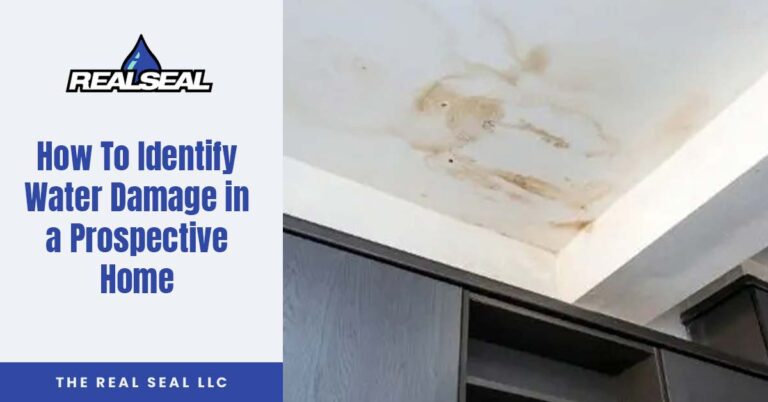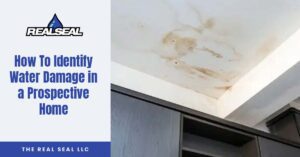There is nothing more important than knowing what to look for when you are looking to buy a home. Understanding all the elements you need to check and what you need to look out for throughout this process is vital. Water damage is one specific issue you should keep a lookout for. Water damage comes in many different forms and can occur in many different areas of the house. Educating yourself on water damage will keep you from purchasing a home that is not structurally safe or could be a health risk to your and your family. Provided below are a few pointers on how to identify water damage in a prospective home. Hopefully, when combined with your intuition, these tips will lead you to find your forever home.
What Signs To Watch Out For
Though there are numerous areas and ways your house could have water damage, the issue occurs more often in certain locations. Listed below are a few common signs that you should watch out for when touring a home.
- Water Stains: While water stains are most often found on the ceiling, they can also be located on the walls. Make sure to keep track of areas where you have identified water stains.
- Soft/Sagging Floor Spots: Keep a close eye out for these spots near the tub, shower, and sink. At times, these areas can be caused by a leaky or broken appliance.
- Watermarks Under Cabinets: You might not think to look here, but you certainly should. If you find a damp or moist area underneath a cabinet or discover signs of mold, it’s likely that there is a leaking pipe somewhere nearby.
- Warped Flooring: All flooring types can be damaged by water. Though this issue is often easy to identify, you should still make sure to check the corners of each room for signs of damage.
Some of the issues above might not be big problems that will keep you from buying a home, but you will need to make that educated decision yourself. Not identifying these issues will only lead to further trouble and frustration down the road.
Read more about – Are Cracks in my Basement Floor Normal?
Trust the Professionals
There is no shame in admitting that you need a professional’s assistance in a task like this. If you are not comfortable doing the walkthrough of a home and identifying water damage yourself, there are professionals available who would be happy to help you. These professionals know exactly what they are looking for and can provide you with an idea of how much it will cost to fix the issue. Having this insight might make or break your decision to buy a home.
Hopefully, these tips for how to identify water damage in a prospective home will lead you down the path of finding the right home for you. If your house does need some work regarding water damage, reach out to our team at The Real Seal LLC. We provide basement waterproofing, foundation crack repairs, and more!
How To Prevent Mold After Water Damage (Step By Step)
If your home has experienced water damage, it’s essential to take quick action to prevent the growth of mold. Mold can quickly develop within just a few days of water damage, leading to unpleasant odors, health concerns, and significant damage to your property. Therefore, it’s vital to take immediate steps to prevent mold growth. Here is a step-by-step process to prevent mold growth after water damage in your home.
1. Identify the Source of the Water: To prevent mold, you must first address the source of the water. Is it a broken pipe, leaking roof, or a flooded basement? Once you have identified the source, fix the problem immediately.
2. Remove any Standing Water: Before starting the process of drying out the water-damaged area, remove any standing water. Use a wet/dry vacuum to extract any remaining water from the flooring, carpets, and other affected areas.
3. Dry the Area: Mold thrives in damp environments, so it’s critical to dry the affected areas as quickly as possible. Use fans to circulate air and increase ventilation, open windows if possible, and use a dehumidifier to reduce moisture levels.
4. Disinfect and Clean the Area: Once the affected areas are thoroughly dry, it’s essential to disinfect and clean them to prevent mold growth. Use a non-toxic, mold-fighting cleaner to clean the surfaces and walls.
5. Dispose of Damaged Materials: If any items have been significantly damaged by the water, such as carpets, drywall, or insulation, it’s essential to remove and dispose of them to prevent mold growth.
6. Monitor the Area: After cleaning up the water damage, it’s essential to monitor the area for any signs of mold growth. Regularly inspect the area for any dampness, odors, or discoloration, and take immediate action to address any potential mold growth.






